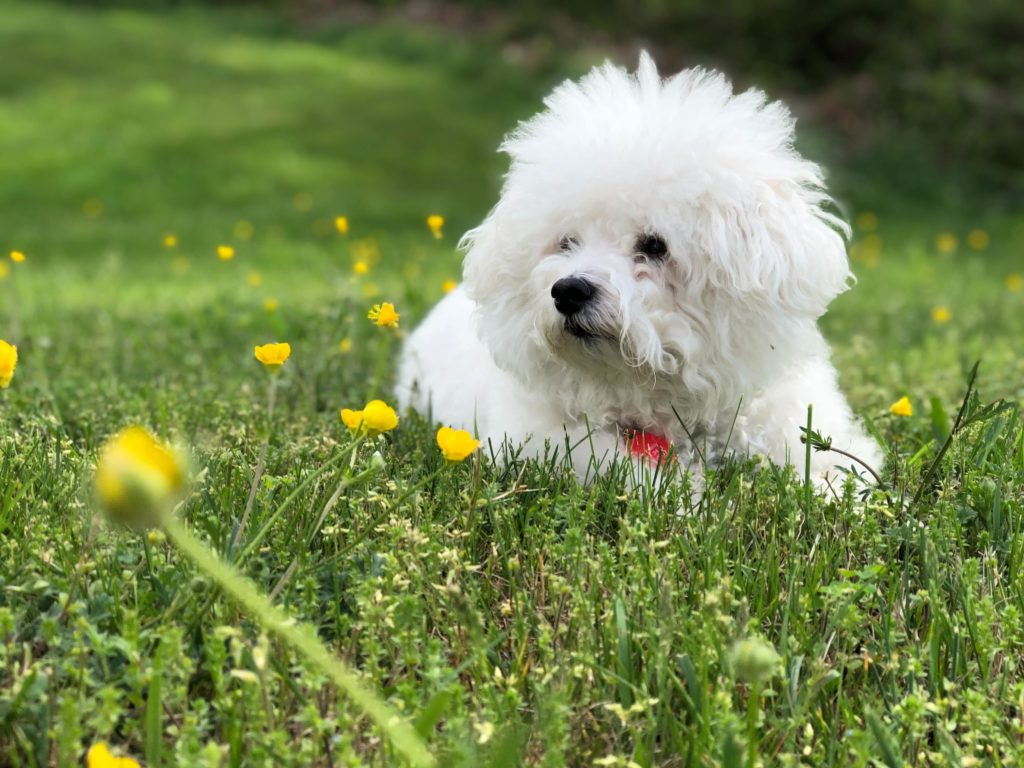With the arrival of spring, we also see an abundance of things ready to cause a nuisance, pollens that float in the environment and new spring grass can start to affect not only us but our pets too if they are predisposed.
Weeping itchy eyes, sneezing and skin redness are just a few of the symptoms our pets can get. In fact, an allergy can affect almost every part of the body (eyes, ears, nose, skin) and the immune system.
What to look out for
Eyes – Conjunctivitis and eye discharge. If the discharge is yellow or green this could be the sign that there is an eye infection. The whites of the eyes may be bloodshot and the dog may be blinking excessively. The dog will likely be pawing and rubbing their eyes and face too.
Ears – The ears are part of the dog’s skin so if the skin is inflamed due to an allergy reaction it is also possible the ears may be sore. Pollens can get lodged down the ear canal and ear folds causing the dog to scratch and shakes their head excessively.
Nose – Sniffing and inhaling allergens or simply by nose contact may cause irritation in the nasal canals producing a nasal discharge. This mucus may also enter the back of the throat via the oropharynx. The dog may cough or find it hard to swallow.
Skin – Direct contact with grass pollens when a dog is out in the garden or on walks may cause the skin to flare up. This often results in inflamed skin under the abdomen, groin, armpits and in between the toes, where there is less hair and the skin more exposed. The dog will lick and scratch the areas it can reach leading to sore hot spots. Left untreated these can weep and become infected and smelly.
Things we can do to help the pets
I currently have a dog I look after that is allergic to the spring grass. He gets a red abdomen, groin and armpits with direct contact. We have found putting him in a Medical Pet Shirt which is a bit like a doggy onesie seems to work and control the inflammation, blocking the direct contact with the grass to these areas.
If you suspect your dog may be suffering from a seasonal flare up it is important to get them checked by a vet. They will be able to prescribe medication to stop the itch/ scratch cycle and keep the dog comfortable. Depending on what part of the body is affected treatment may be in the form of eye or ear drops, topical creams, shampoo or anti-inflammatories and anti-histamines.
During my nursing career, I had a number of pets that would come and see me monthly for their vaccine to help control their allergy and prevent immune responses to the allergen which in the past may have caused the dog to have sore itchy skin. These vaccines tended to work well and it is usually 1ml or less that is given in the scruff of the neck. Once the diagnosis has been made these dogs would remain on the vaccine for life to keep their allergy under control.
Keep on top of flea control
The vet may want to take skin scrapes, hair plucks to rule out other causes such as parasites (fleas, mites). This is why keeping on top of flea control is particularly important with a dog that has sensitive skin. It is the saliva from the flea bite that dogs and cats can be allergic to when the flea bites!
If the allergies are bad the vet may suggest a blood or intradermal test to highlight which pollens or other allergens, in particular, the dog is allergic to. A positive titre in some pollens, for example, may lead to the vet recommending an allergy vaccine specific to your dog.
Sophie, Branch Owner Stroud and Tetbury




